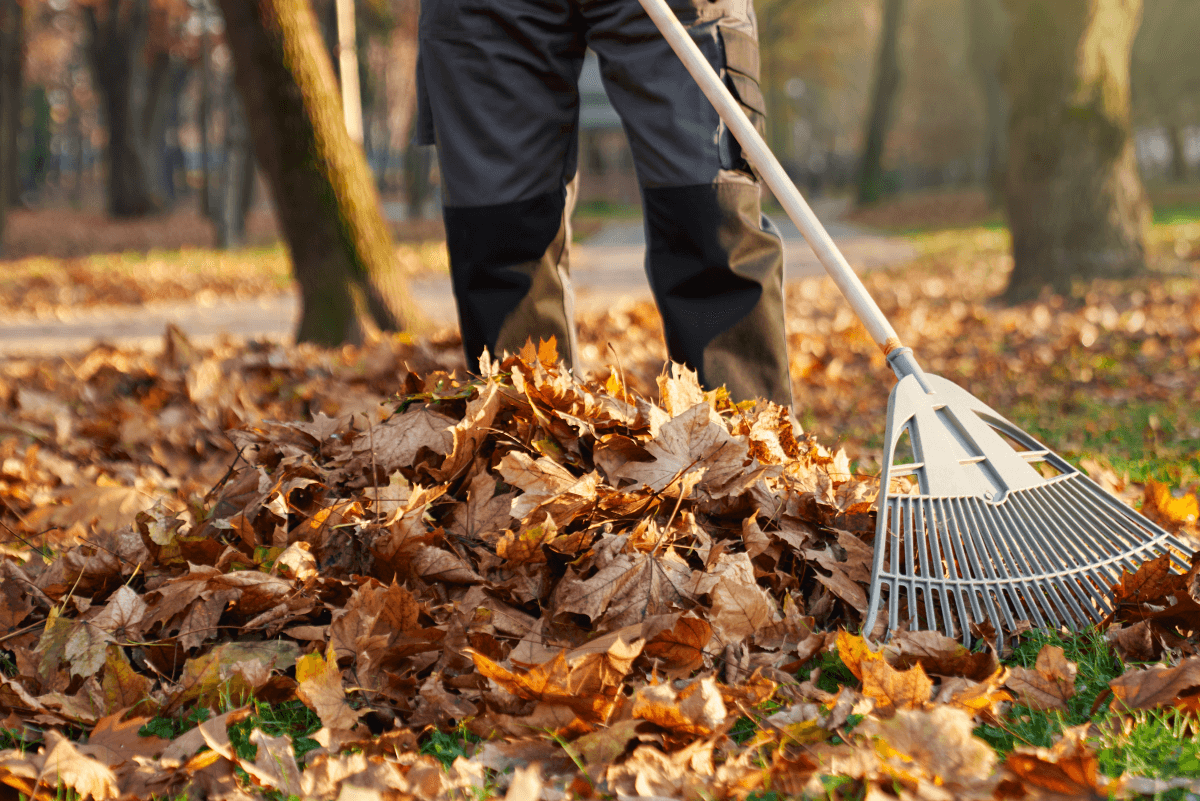Managing Fall Foliage Best Practices for Leaf Removal and Composting
By United Country Real EstateOctober 21, 2024

A guide to handling falling leaves, whether for composting, mulching or clearing to protect your land and home.
Fall officially begins in late September each year, but falling
leaves and cold weather hit different areas at different times, or sometimes
not at all! If you’re a landowner or have a home with a yard, you are well
aware of the happiness and hassles fallen leaves can bring to a household. Preparing
your property for the fall and cold weather requires many different steps,
raking and removing foliage is just one part of that process. This
comprehensive guide will consider the benefits and hindrances that come with
fall foliage along with best removal methods and tools to help you better
manage your land.
Are Dead Leaves Harmful to Your Land?
Fall foliage and other organic matter that is shed during the
autumn season can be harmful to your grass if not properly managed. Dead leaves
can block out the sunlight from the growing grass and hinder moisture retention
if there are too big of piles of them. At any point, an ideal mark is about
10-20% of your yard or land should be covered. Any more than this can cause
serious harm to the regeneration of your plant life. Wet leaves can compact the
soil and prevent air circulation, leading to issues in the root system’s
health.
Are There Benefits to Fall Foliage?
Dead leaves on your grass can also provide some benefits to your
lawn. Decomposing over time, dead leaves can contribute to a compost pile that
is beneficial to soil health. This sustainable practice is easy to do and quite
cost effective, providing nutrients to the soil and preventing erosion and pest
interference.
Tools for Leaf Management
Rakes
Raking up the fallen leaves in your yard is the most
traditional method and is perfect for residential homes or houses with smaller
yards. It’s eco-friendly, quiet, affordable and gives you the power to control
where you gather your leaves. Choosing the right rake has more influence to the
speed and success than you would think. Whether your grass is covered in traditional tree leaves
or pine
needles requires different rake shapes. Some might have a preference
between plastic
and metal rakes with the former typically offering a greater width and
length and the latter having a longer lifespan.
Leaf Blower
Leaf blowers are a great tool for leaf management, particularly
for larger areas. Making quick work of leaf removal, be mindful of safety
precautions, especially for gas-powered blowers. New cordless and more
sustainable options are now available, but choose the
right leaf blower for you based on your space and personal needs. Proper
research before purchasing and implementing your leaf blower is strongly encouraged.
Leaf blowers can be very loud and cause debris to fly around, so wear eye
protection and earplugs to keep yourself safe.
Mower
A mower equipped with a leaf collector or mulching blade can
shred the dead leaves as you mow, making the lawn and leaf maintenance faster
and easier. Not only does this save you time, but it also gives your yard a
boost of nutrients from the organic matter of the foliage. Opting for a mower for
your leaf removal is also best for those with large amounts of land as trying
to rake an acreage would not be efficient unless only very few trees are on
your property.
Mulching vs. Composing Leaves
Mulching Leaves
Mulching leaves involves shredding them directly onto your garden,
lawn or acreage. This method can save time and energy by returning nutrients to
the soil without a separate composting process. To achieve this result, the
easiest option is purchasing a mulching mower, but you can also buy a separate mulcher.
This option requires you to rake all the leaves, shred them and spread them
around your desired area. Be sure to find the right blend of the leaf mulch
with your yard, so your grass isn’t suffocated, but is still benefiting from
the organic matter nutrients.
Composting Leaves
Leaf compost is the best way to break down leaves for a
long-term solution for soil nutrition and improvement. Start a compost pile in
a shaded area in your yard or in a designated tub/box then you can mix the dead
leaves with green materials like grassing clippings, food scraps and other
organic materials. In roughly six months, depending on the makeup, all the
materials will have broken down. This compost will become a rich, organic fertilizer
than can be used to enrich gardens, crops or soil.
Maintaining Your Property During Fall
Checking Your Roof
Leaf piles can accumulate on top of roofs during the fall, which
can cause clogs and damage. Inspect your roof before and after the fall season
or routinely during the cold months. Look for and remove piles of leaves, moss
or other plant life that shouldn’t be there. Check for buckled, curled or faulty
shingles or roof tiles before the harsh weather starts, so you can repair or
replace them with plenty of time before the snows or rains begin.
Checking Your Gutters
Clearing out your gutters before torrential rains or snows
is critical for preventing water damage and maintaining a healthy home. When
leaves build up in your gutters, they can block the spouts and downspouts, causing
water from rain or snow to back up or even overflow. Installing rail guards can
help eliminate this issue.
Sources:
